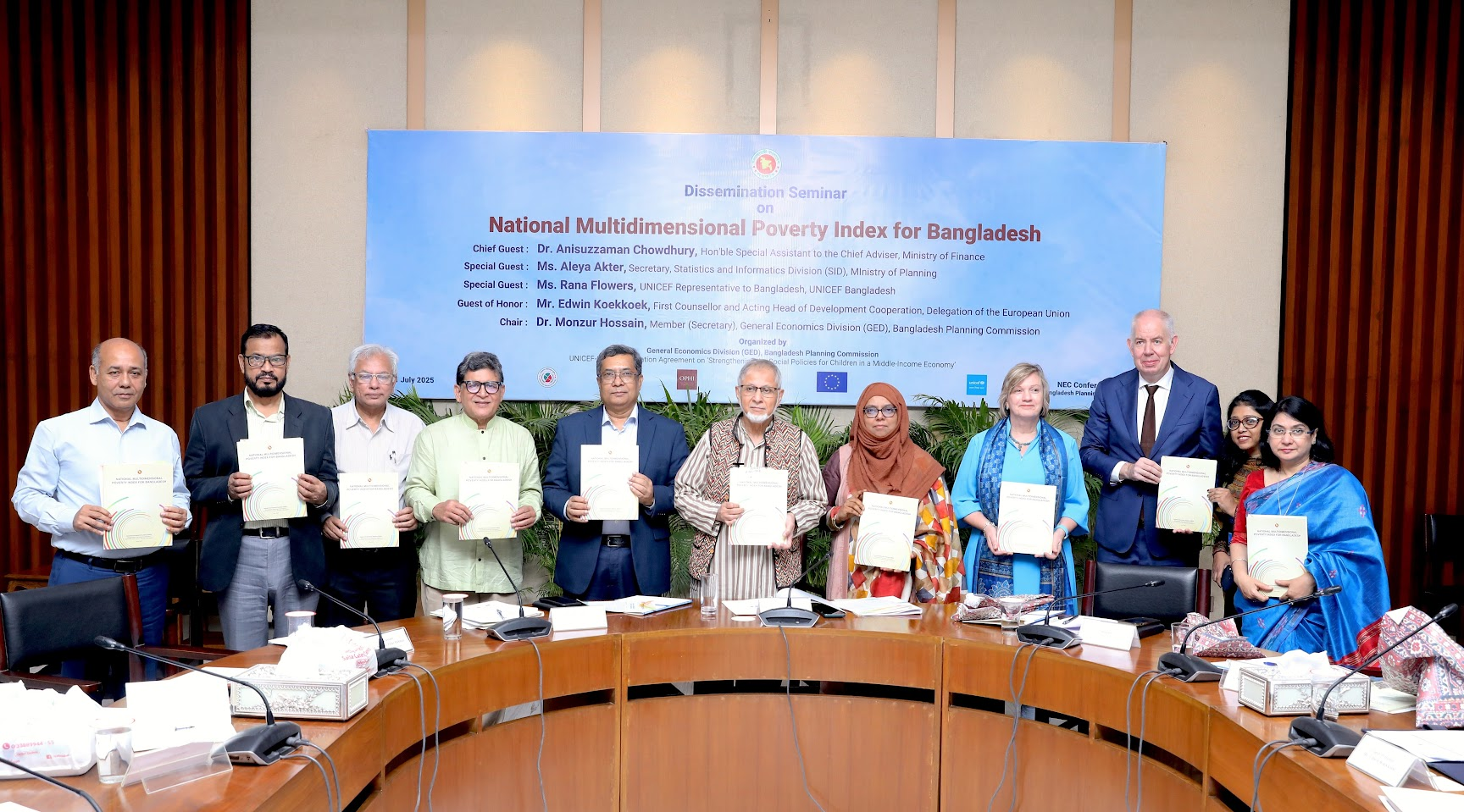Bangladesh launches an official National MPI
On 31 July, The General Economics Division (GED) of the Bangladesh Planning Commission, in collaboration with UNICEF Bangladesh, Bangladesh Bureau of Statistics (BBS) and OPHI, launched a National MPI as an official poverty measure.
Based on the 2019 Bangladesh Multiple Indicator Cluster Survey (MICS), the baseline Bangladesh MPI complements monetary poverty statistics by capturing key overlapping deprivations experienced by households living in poverty to offer clear priorities for policy.
The National MPI comprises 11 indicators grouped under three dimensions: Living Standards, Education, and Health. It illuminates child poverty and can also be disaggregated at the national, divisional, and district level to help shape equitable, multisectoral policies and programmes at all levels of government.
According to the Bangladesh MPI, 39.8 million people (24.1% of the population) live in multidimensional poverty. Regional analysis finds that the proportion of people living in poverty in rural areas (26.96%) is double the proportion of people living in poverty in urban areas (13.5%). The proportion of people living in poverty ranges from 15.2% in Khulna to 37.7% in Sylhet, with even greater variations across the 64 districts where it rises from 8.7% in Jhenaidah to 65.4% of people in Bandarban.
Nationally, poverty is highest among children. Over 35.6% of the population of Bangladesh are children under 18 years of age. According to the MPI, 28.6% of children aged 0 to 9 live in poverty, compared with 28.8% of the children aged 10 to 17, and 21.4% of adults (18+).
Of the 11 indicators tracked by the national MPI, the housing, internet and sanitation indicators register the highest deprivations with 20% of the population being poor and deprived in each indicator nationally. Children's school attendance followed by years of schooling, nutrition and housing have the highest weighted contributions to the national MPI.
The Bangladesh MPI report also presents harmonised trends over time using MICS data from 2012–13 to 2019. The analysis paints an encouraging picture for Bangladesh: the proportion of people living in poverty has reduced over this period to just under a quarter of the population. Despite population growth, the number of MPI poor people dropped by 25.7 million. Particularly strong reductions were seen in the deprivations related to electricity, assets, housing, years of schooling and school attendance, and there has been a noteworthy decline in the incidence of multidimensional poverty among children.
OPHI Director, Sabina Alkire, said of the report “It’s been an honour to work with the committed teams of the General Economics Division (GED) of the Bangladesh Planning Commission, Bangladesh Bureau of Statistics (BBS) and UNICEF Bangladesh to generate what we hope will become an essential tool for policy. Bangladesh’s new MPI, which is tailored to national priorities and includes internet access and reproductive health for example, will be updated regularly and track progress over time. Our hope is that this official MPI is used by the whole of government, as well as by civil society organisations and the private sector, to inform high-impact evidence-based interventions that swiftly pinpoint and address the specific deprivations of poor households and children living across Bangladesh.”

Official launch of A National Multidimensional Poverty Index (MPI) for Bangladesh, 31 July 2025.


